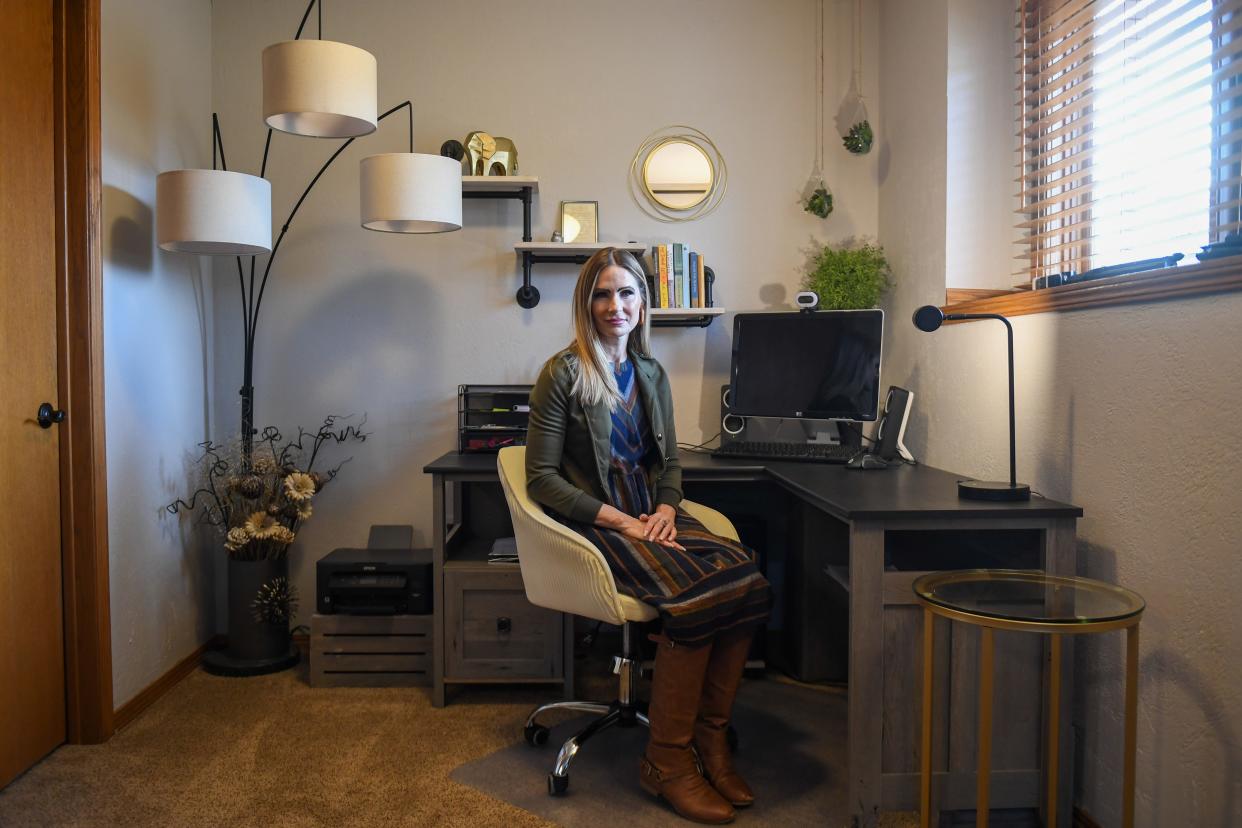Teacher shortage: South Dakotans explain why they left education for something new
There’s been a lot of buzz about the teacher shortage and the detrimental effects it's had on schools across South Dakota.
South Dakota as a whole has seen an increase of 200 teacher job postings during the last five years, something experts say is driven by pay, politics and the pandemic, for example.
Aberdeen School District Superintendent Becky Guffin said months ago her district stopped offering calculus and statistics classes because a teacher couldn’t be found for those classes. She also said she knew of nearby districts without a third grade teacher or high school science teacher, for example, for similar reasons.
The Tea Area School District had to close a special education position in the high school this year and lost two teachers to other industries over the school year, Superintendent Jennifer Nebelsick Lowery said.
In the Sioux Falls School District, some instructional coaches had to be moved back into classrooms this year. In the Brandon Valley School District, hiring of some positions had to be delayed, and other vacant positions had to go unfilled.
The Argus Leader recently published a five-part series about the reasons for the teacher shortage and the variety of ways schools, colleges and the state as a whole are attempting to address that shortage. The series inspired some who recently left the teaching profession to speak about their decision.
Part 1 of our teacher shortage series: South Dakota needs more teachers. Here's why it's not as easy as just hiring more.
Rarely do teachers speak publicly about why they’ve left the profession, and several teachers who quit teaching in South Dakota are now sharing their stories for the first time openly to raise awareness for the issue and discuss potential solutions.
Here are some of their stories.
‘There’s not exactly an incentive for going above and beyond.’
Nicole Mutchler taught fifth grade classes at Hawthorne Elementary School in Sioux Falls for four years and left in May to work in project management.
Teaching was always her dream job and her calling, she said, but at the beginning of the last school year, she got a feeling she would want to leave.

“You have to start weighing the tolls of the mental and emotional energy with how much you’re actually getting out of it,” Mutchler said.
She said it’s a “hard pill to swallow” that South Dakota is one of the lowest-paying states for teachers to work in. The low pay contributed to her decision to leave, having worked three other jobs during the weekends or during summer break in addition to teaching to make ends meet. She left the district with a salary of $48,101, according to district records.
“Hawthorne is an incredible school. I can’t think of a better place to work for the district than (there), but at the end of the day, you’re making almost no money and putting in so many hours of work inside a school that you don’t actually get (paid) for,” Mutchler said.
Part 2 of our teacher shortage series: 'I feel like I'm a world-changer': Teachers often inspire their students to enter education
It’s hard to catch a bathroom break or have time for lunch, she said, and teachers spend so much time prepping lessons and activities for their classroom.
She said she did all of her work to 200% of her capability, then left each school day feeling empty, and emotionally and physically drained.

“One motivator for me to get out of education is there’s not exactly an incentive for going above and beyond, even though almost every teacher does,” she said.
‘The amount of out-of-school work was unbearable.'
April Ross taught Spanish in three different high schools for 15 years but left in 2018, after reaching her breaking point from burnout, stress and job dissatisfaction. Ross decided it was time to make a change.
“(I left) not because I didn’t love my students and didn’t love teaching, but because the pacing and the amount of out-of-school work was unbearable,” Ross said. “It was taking its toll on my family, my personal time and my overall wellbeing.”

Ross said when she taught, she lived “bell to bell” and rarely got to sit down or take a bathroom break. She found the pace unbearable sometimes.
As a teacher, she spent hours at home in the evenings doing lesson plans and grading papers, which started to wear her down.
“I really wanted to have more balance and be able to leave work at work, and go home and enjoy time with family,” Ross said.
Part 3 of our teacher shortage series: How are South Dakota’s colleges filling the teacher shortage and educating future teachers?
Now, Ross works in the nonprofit sector in an area she’d always been passionate about as the educational coordinator at Caminando Juntos, a ministry for the Latino population in Sioux Falls.

The position allows her to still use her love of teaching and her bilingual skills to work with a population of people near and dear to her heart, connect more deeply with people and continue teaching in the adult education program. She said she finds the work more balanced, and has less of the unhealthy pressure or stress felt while teaching.
‘Good days didn’t seem like they were good enough.’
Kyle Sanderson taught fourth and fifth grade in Newell for 10 years, but left at the end of the school year in May after losing the passion and love for teaching he once had.
He taught most subjects, but mainly social studies and history. He said a big part of his decision to leave the teaching profession came from the politics involved in the social studies standards revision process, which ended in the standards being passed despite opposition from more than a thousand people including teachers, Indigenous education advocates and tribal leaders.
“Removing teachers from that process made me feel like they were trying to make teachers look like a villain in all of this,” Sanderson said. “We’re trying to do what’s best for our kids.”
He was also put off by some of the remarks made by politicians, Gov. Kristi Noem and South Dakota Department of Education officials before and during the standards process that he said painted teachers in a bad light.
For example, he didn’t like how Noem spoke about educators when she said teachers were “teaching our children and grandchildren to hate their own country.”
Other reasons contributing to Sanderson’s decision to leave the teaching profession included the low pay and being pressured not to talk about pay with his colleagues; stress and burnout; and, getting more responsibility added to his plate during the COVID-19 pandemic without extra compensation or time. He left the job with a $41,000 salary, according to Newell school district documents.
Part 4 of our teacher shortage series: How is the state of South Dakota working as a whole to end the teacher shortage?
He knew it was time to leave teaching when he felt tired all the time, when he dreaded the next day of school each night and when he stopped feeling excited to go to work in the morning.
“Even good days didn’t seem like they were good enough to keep me there,” he said.
Now, Sanderson is a transportation supervisor at a bus company in Mitchell.
Solutions to the teacher shortage
Being more competitive with teacher salaries is part of the solution to ending the teacher shortage, Lowery said.
South Dakota continues to rank last or near last in annual rankings from the National Education Association’s assessment of teacher salaries across the U.S. South Dakota ranked 49th in the nation in the latest NEA rankings from the 2021-2022 fiscal year.
Teachers’ workloads and special educators’ caseloads also need to be eased, Lowery explained.
Part 5 of our teacher shortage series: What other unique strategies for recruitment and retention are working in South Dakota?
Mutchler said a solution to the teacher shortage would be to listen to teachers who are in the classroom every day when they bring up repeated concerns about their job, time and pay. Teachers should also be listened to and believed when they bring up that concern about their classrooms, she added.
Sanderson said it’s also important for there not to be a disconnect between administration, school boards and teachers for finding the solutions to prevent teachers from leaving the profession and causing a shortage in educators.
"I have no ill will toward my old district," he said. "I still am a proponent of how strong public education is. I don't want to see that going away, or stripped away."
This article originally appeared on Sioux Falls Argus Leader: South Dakota educators open up about leaving amid teacher shortage
